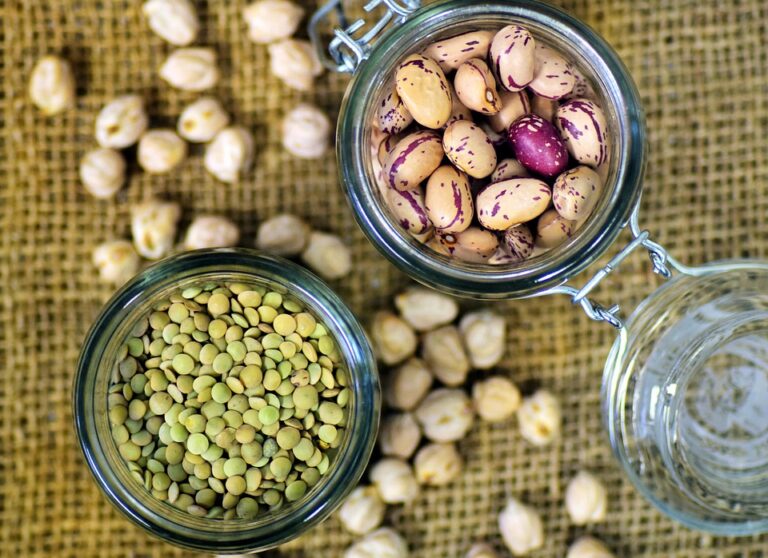Exploring the Future of Food: The Rise of Alternative Proteins in Sustainable Diets
As global awareness of environmental issues grows, the food industry is undergoing significant transformation. With an estimated population of nearly 10 billion people by 2050, the demand for sustainable food sources is at an all-time high. Among the most promising developments in this endeavor is the rise of alternative proteins, which are poised to reshape our diets and our planet’s future.
What Are Alternative Proteins?
Alternative proteins refer to non-traditional sources of protein that substitute or supplement animal products. They can be categorized into several categories, including plant-based proteins, insect proteins, and lab-grown meats. The shift towards alternative proteins is not just a trend—it’s a response to pressing global challenges such as climate change, food security, and health concerns.
The Environmental Impact
The production of conventional animal protein comes with a hefty environmental price tag. According to the Food and Agriculture Organization (FAO), livestock accounts for about 14.5% of global greenhouse gas emissions. In contrast, alternative proteins can dramatically reduce these emissions by utilizing fewer natural resources. For example, producing one kilogram of beef can require up to 15,000 liters of water, while plant-based proteins like lentils need only about 600 liters to create the same amount, highlighting the sustainability of alternative proteins.
The Growing Market for Alternative Proteins
As consumers become more conscious of their food choices, the market for alternative proteins has seen explosive growth. A recent report from MarketsandMarkets estimates that the global alternative protein market will reach $27.6 billion by 2025, with a compound annual growth rate (CAGR) of 9.2% from 2020. Factors behind this growth include the increasing prevalence of vegetarian and vegan lifestyles and heightened awareness of animal welfare issues.
Types of Alternative Proteins
-
Plant-based Proteins: This segment includes soy, pea, and quinoa protein, offering impressive nutritional profiles. Brands like Beyond Meat and Impossible Foods have emerged as front-runners in the industry, presenting meat substitutes that appeal to meat lovers and vegetarians alike.
-
Insect Protein: Though it might sound unusual in Western diets, insect protein is a highly efficient protein source. Crickets, mealworms, and grasshoppers are being increasingly recognized for their high protein content, low carbon footprint, and minimal resource consumption during farming.
- Cultured Meats: Lab-grown or cultured meat is developed from animal cells without the need to raise and slaughter livestock. This technology holds immense promise for alleviating the ethical concerns associated with traditional meat consumption and potentially transforming the future of meat-based diets.
A Cultural Shift Towards Sustainability
Beyond just the environmental factors, the rise of alternative proteins signifies a cultural shift in dietary habits. Consumers are increasingly prioritizing health, sustainability, and ethical considerations in their food choices. The phrase "you are what you eat" resonates more than ever, as people strive to support a food system that aligns with their values.
Consider this analogy: choosing alternative proteins is like making sustainable investments. Instead of pouring money into industries that may be foundational but are detrimental to the planet, consumers are starting to direct their spending towards companies and products that prioritize sustainability, ethics, and long-term benefits.
Challenges and Opportunities
While the rise of alternative proteins is promising, it is not without challenges. Consumer acceptance plays a critical role in market growth. Many consumers are still skeptical about the taste, texture, and nutritional adequacy of these products. Education and marketing strategies will be essential to overcoming this hesitance and making alternative proteins a household staple.
Moreover, regulatory hurdles and the need for increased production capacities may pose additional challenges. Governments and private sectors must work in tandem to create policies that support innovation without hampering progress.

Alt text: Plant-based proteins representing the rise of alternative proteins in sustainable diets.
The Future of Food is Here
The rise of alternative proteins represents a pivotal opportunity for our food system. With a sustainable focus, these food innovations could dramatically reduce the environmental impact of our diets while catering to a growing consumer base that values health and sustainability. As technology continues to advance and our understanding of nutritional science deepens, expect alternative proteins to play an increasingly central role in our future diets.
Conclusion
In conclusion, the rise of alternative proteins is a defining characteristic of our evolving food landscape. As consumers and producers re-evaluate traditional dietary norms, embracing these sustainable alternatives may well be a path toward a better, healthier planet.
For those interested in further exploring the future of food, consider reading more about Sustainable Agriculture Practices and The Impact of Plant-Based Diets. Additionally, you may find invaluable insights on alternative proteins through reputable sources like the World Economic Forum.
Disclaimer: The content provided in this article is for informational purposes only and does not constitute professional advice. Buzzo.live is not responsible for the accuracy or reliability of the content.


